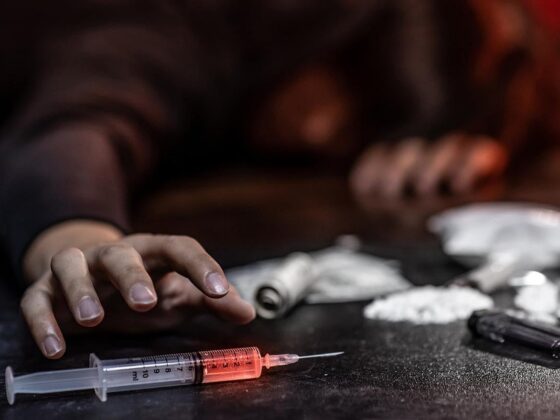TUESDAY, Oct. 31, 2023 (HealthDay News) — In some big cities, mobile stroke units can deliver a powerful clot-busting drug to patients as these specialized ambulances speed to the hospital.
Now, a new study shows these units deliver anti-clotting treatment a median of 37 minutes faster than when traditional ambulances drive stroke patients to the ER. And that extra time gives stroke victims better chances of averting the stroke or of resolving its symptoms rapidly.
The majority of strokes occur due to blood clots, said study author Dr. Matthew Fink, chair of neurology at Weill Cornell Medicine and NewYork-Presbyterian in New York City.
“The blood clot has to be removed or dissolved very quickly if we’re going to prevent a stroke or to reverse a stroke, because the brain cells die very quickly,” Fink explained. “And we felt that it takes too long for patients to be brought to the hospital.”
The idea was to create these specialized ambulances in New York City, to take the treatment directly to the patient.
While NewYork-Presbyterian’s Mobile Stroke Treatment Unit, begun in partnership with Weill Cornell Medicine, Columbia University Irving Medical Center and the Fire Department of New York, started in 2016, it wasn’t the first. Houston was the first in the United States and the New York units were based on a similar program operating in Germany.
“We built out these special ambulances that have a CT scanner on the ambulance,” Fink explained. That’s used to scan the patient’s brain.
“We have a nurse on the ambulance and we have a stroke expert in constant contact via telemedicine link, audio and video. So, when someone calls EMS [emergency medical services] and says, ‘I think I’m having a stroke,’ we send the ambulance out to the person’s home, evaluate them, make a diagnosis and treat them immediately,” Fink said.
They’re given what’s called tissue plasminogen activator (tPA), which quickly dissolves the clot blocking blood flow to the brain.
“By doing that, as this paper has shown, this research has shown, if we do that, there’s a much higher probability that the patient is going to recover right away and not be left with any type of a permanent impairment,” Fink said.
The study was a cooperative effort conducted in the multiple large U.S. cities that now have these units, using data from 2015 to 2020.
Researchers evaluated more than 1,000 patients. Among those in the study, 644 received tPA while in the mobile stroke unit and 365 received regular EMS care.
Patients received the tPA treatment a median of 87 minutes after the onset of stroke symptoms. About 1 in 4 of those who got the drug and had a suspected stroke recovered within 24 hours. Meanwhile, 1 in 6 averted a stroke altogether with no trace of brain injury on an MRI.
Because the treatment was delivered about 37 minutes faster than patients would receive it in a traditional hospital setting, many more people got the treatment in the crucial first hour.
About 18% of these patients averted a stroke compared to 11% of those who received traditional hospital services. About 31% of mobile unit patients had symptoms resolve within 24 hours compared to 21% of those with the typical care.
About 20 cities in the United States have these programs, Fink said.
The findings were published online recently in the Annals of Neurology.
Dr. Larry Goldstein, chair in the Department of Neurology at the University of Kentucky, pointed to the importance of quick response to a stroke.
“Although national, evidence-based guidelines support the use of clot busting drugs up to 4.5 hours after the onset of symptoms, the longer the occlusion [blockage] is present, the less likely the patient will derive maximum benefit from the treatment,” Goldstein said. “Time saved is brain saved.”
People can familiarize themselves with the mnemonic BE-FAST to identify symptoms, Goldstein suggested.
That’s sudden onset of any of balance difficulty for “B,” while loss of vision in one or both eyes or double vision is the “E” for eyes, “F” is drooping of one side of the face, “A” is arm weakness, “S” stands for speech abnormalities, and “T” is time.
While the study showed that more patients treated through mobile stroke units received clot-busting drugs and had better outcomes, the study did have limitations, Goldstein noted.
That included that it wasn’t randomized and the participating sites were largely urban.
“Mobile stroke units may not be feasible outside of metropolitan areas,” Goldstein noted.
The authors are hoping this research will prompt Medicare to assign mobile stroke unit services a billing code to pay for the services.
“The major obstacle to running these programs, as you might imagine, is cost,” Fink said.
Right now, in New York, it’s paid for by philanthropy, Fink said.
An upcoming paper by these same researchers will show that the overall cost of care is less using mobile stroke units than it is with traditional treatment.
“We’re in the process of trying to get the insurance companies, including Medicare, to cover the cost of this, which they do if the patient comes to the emergency department,” Fink said. “We do the same thing on the ambulance that they do in the emergency department, but insurance companies don’t pay for it.
“What we’ve seen is that literally patients, by the time we actually get back to the hospital with the patient, the neurological deficit is completely cleared and a lot of the patients are completely back to normal,” Fink said. “By the time we get to the hospital, that’s how fast it works if you can treat them very, very quickly. It’s that dramatic.”
What patients need to know is that if they think they might be having a stroke, they should call 911 right away and tell dispatch that they think they’re having a stroke, Fink said.
For policymakers, the message is that a program like this saves a tremendous amount of money.
“I think that people in our community should know that we have great treatments to prevent strokes and to treat strokes. The field has changed dramatically over the last 25 years. We can really do a lot to help, but we can’t help if people don’t make those calls,” Fink said.
More information
The American Stroke Association has more on strokes.
SOURCES: Matthew Fink, MD, chair, neurology, Weill Cornell Medicine and NewYork-Presbyterian, New York City; Larry Goldstein, MD, professor and chair, Department of Neurology, associate dean, clinical research, College of Medicine, and co-director, Kentucky Neuroscience Institute, University of Kentucky, Lexington; Annals of Neurology, Oct. 6, 2023



